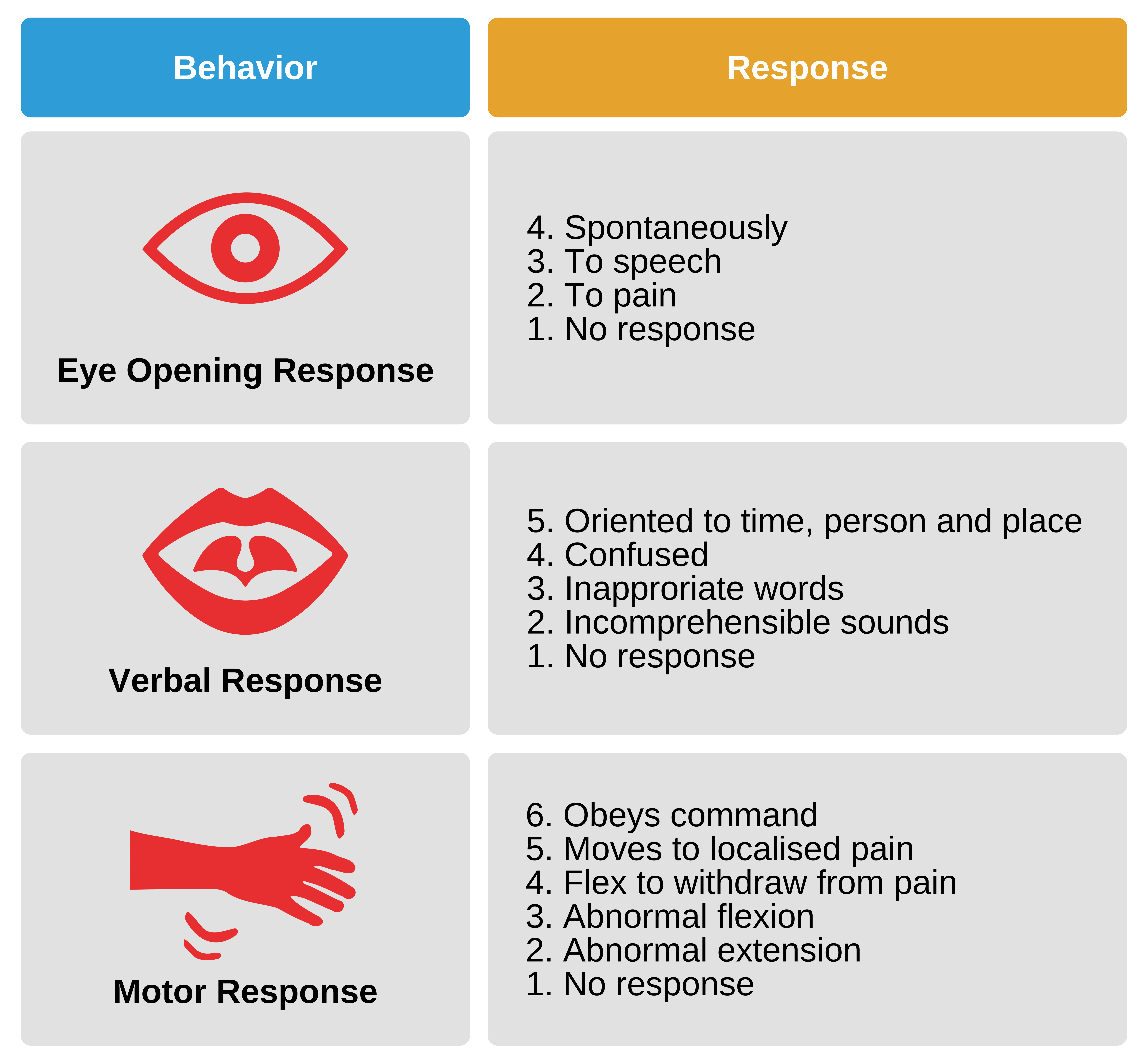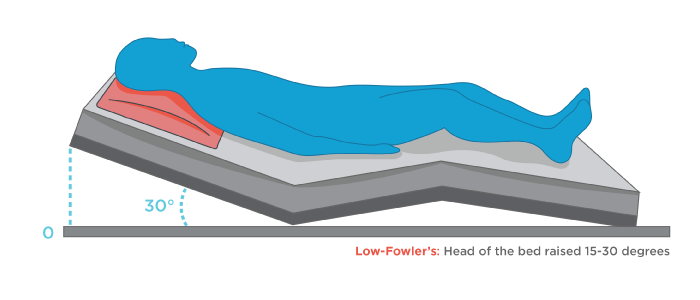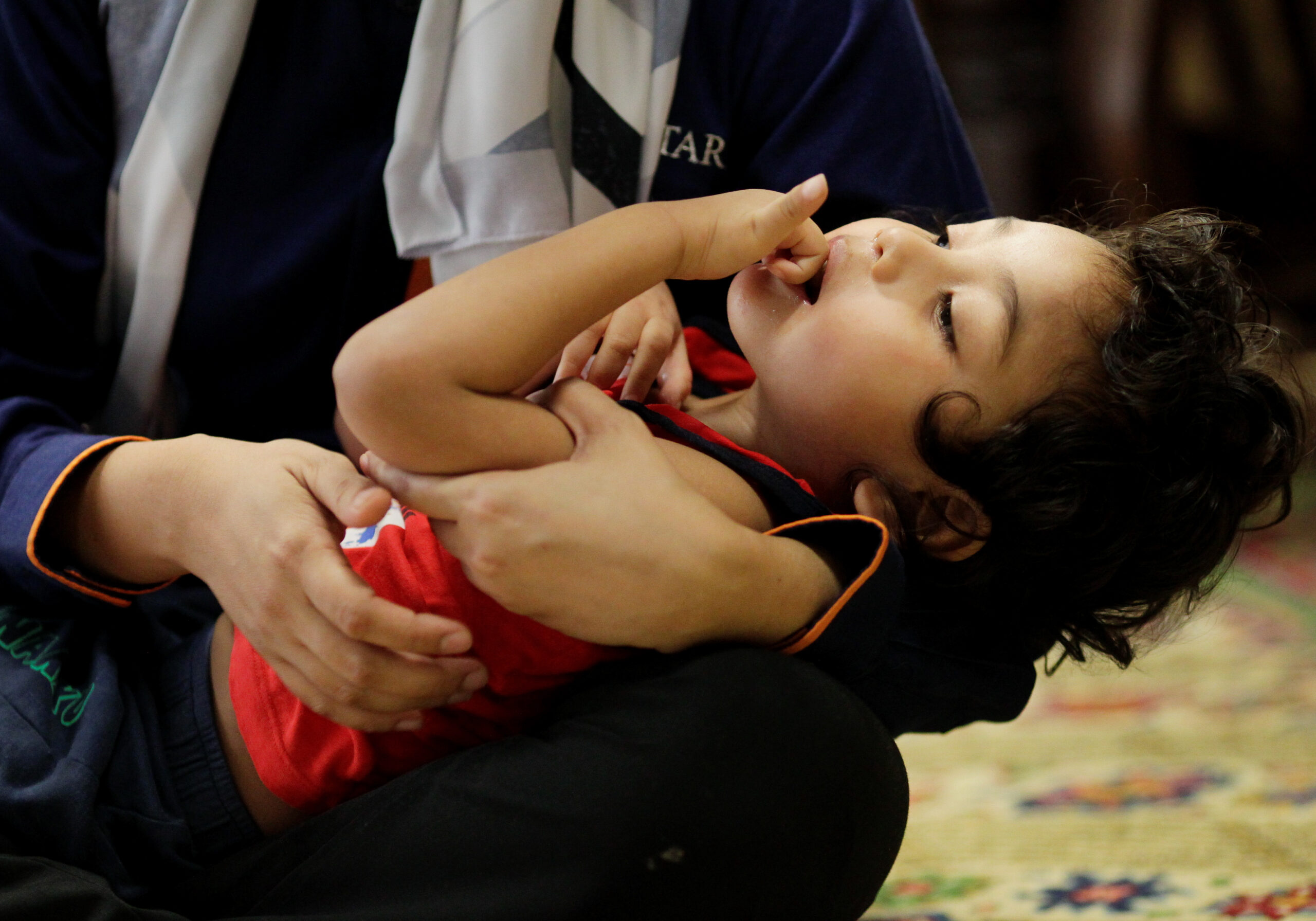Neurologic System
Neurologic System
The patient’s neurologic function must be maintained during post-cardiac arrest care by:
- maintaining adequate brain perfusion
- achieving normal serum glucose concentrations
- implementing targeted temperature management
- preventing increased intracranial pressure
- treating the cause for seizures
Assessing Neurologic Problems
Frequent physical examinations and neurologic examinations are essential. Providers must monitor the temperature, heart rate, and systemic blood pressure in the post-arrest child. A neurologic exam evaluates the patient’s brain function.
The neurologic assessment involves the patient’s pupillary response to light stimulation, gag reflex, corneal reflex, and oculocephalic reflexes to ensure that brainstem function is intact. The provider uses the Glasgow Coma Scale to see if the patient’s overall neurologic function is improving or deteriorating.
Clinicians must observe for impending uncal herniation, which can cause cardiac arrest by suppressing the central controls for respiration. The child with uncal herniation will present with an unequal pupillary light response, posturing, hypertension, bradycardia, erratic respiratory control, apnea, and depressed response to external stimuli.
If the patient has a central nervous system dysfunction secondary to hypoxic brain injury, the clinician must observe for hypoglycemia, convulsions, toxins or drugs, electrolyte abnormalities, hypothermia, traumatic brain injury, stroke, and intracerebral hemorrhage.
The clinician must request the following laboratory examinations: blood glucose concentration, serum electrolytes, ionized calcium, and toxicology studies (when appropriate). Cerebral spinal fluid studies can be assessed if the patient’s cardiopulmonary status is unremarkable. The provider should consider computed tomography studies of the head and an electroencephalogram. These studies will give the clinician clues as to the cause of increased intracranial pressure or seizures.

Glasgow Coma Scale
Neurologic Management
Perfusion to the brain is of the utmost importance and ensured by optimizing cardiac output and arterial oxygen content. Hyperventilation reduces cerebral blood flow and should only be done in the presence of impending uncal herniation.
Glucose is the primary fuel for the brain, so treating hypoglycemia is critical. The team must monitor blood glucose carefully and administer glucose when needed while also avoiding hyperglycemia. Both hypoglycemia and hyperglycemia are linked to poor outcomes in these patients.
Patients with increased intracranial pressure (ICP) can be treated by elevating the head of the bed 30 degrees if the child’s blood pressure is stable and there are no traumatic injuries to the spine. A brief period of hyperventilation may be indicated if the child’s ICP is concerning for uncal herniation.
Mannitol and a hypertonic saline infusion may help relieve pressure if the patient presents with acute herniation syndrome. A pediatric neurosurgical consult is indicated for the treatment of neurosurgical conditions such as traumatic brain injury and intracranial hemorrhage.

Head of Bed Elevated to 30 Degrees28
Seizures are managed aggressively by administering benzodiazepines such as lorazepam and midazolam. Other anti-seizure medications such as phenytoin, levetiracetam, or barbiturates can suffice. Caution is warranted when using barbiturates in these patients because they can cause hypotension.
Metabolic disorders can also cause seizures. Hypoglycemia, hyponatremia, or hypocalcemia should be treated as indicated. Toxins and metabolic diseases can cause seizures.

A child having a seizure.
Targeted Temperature Management
Targeted temperature management (TTM) is an integral part of post-cardiac arrest care. Patients must be treated aggressively for hyperthermia. Comatose patients should undergo therapeutic hypothermia treatment.
Fever is known to cause poor outcomes in post-cardiac arrest patients due to an increase in metabolic demand. There is a 13% increase in metabolic demand for every elevation of 1°C from normothermia. Fever is a consequence of increased inflammatory mediators and cytotoxic enzymes, which can worsen brain injury.
The room should be cooled to prevent increases in core temperature. Cooling devices may be necessary. Antipyretics should be used aggressively to prevent a fever > 37.8°C. Active rewarming techniques must only be used for patients resuscitated after accidental hypothermia.
Therapeutic hypothermia can be done in the comatose pediatric patient that has been resuscitated after an out-of-hospital cardiac arrest. Treatment includes two days of hypothermia at temperatures 32–34°C, followed by normothermia for 3 days. Shivering increases metabolic demand and should be controlled with neuromuscular blockers during therapeutic hypothermia.
During TTM, the child must be closely monitored for complications of hypothermia, including diminished cardiac output, arrhythmia, infection, pancreatitis, coagulopathy, thrombocytopenia, hypophosphatemia, and hypomagnesemia. TTM should only be performed in well-equipped institutions with experienced staff.
28 Fowler’s position: beyond the bed. Permobil website. Accessed June 15, 2021.
https://hub.permobil.com/blog/fowlers-position-beyond-the-bed
29 Bro-Jeppesen J, Hassager C, Wanscher M, et al. Post-hypothermia fever is associated with increased mortality after out-of-hospital cardiac arrest. Resuscitation. 2013;84(12):1734–1740.
30 Goyal K, Garg N, Bithal P. Central fever: a challenging clinical entity in neurocritical care. J Neurocrit Care. 2020;13(1):19–31.
https://www.e-jnc.org/journal/view.php?doi=10.18700/jnc.190090